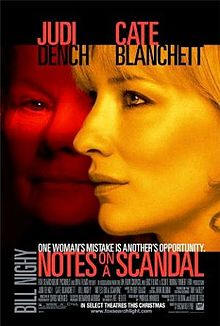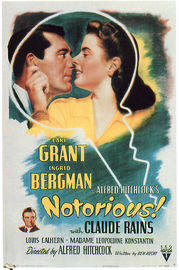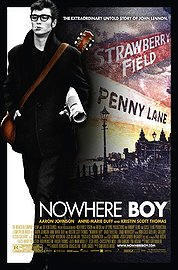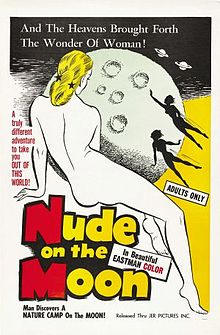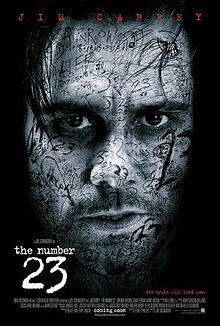|
Movies we've seen © 2004-2013 by John Varley; all rights reserved |
N
|
Nacho Libre (2006) VarleyYarn. IMDb.com The Naked City (1948) This is a remarkable film for a variety of reasons. It’s the only movie I can recall with spoken opening credits. A narrator identifies himself as producer Mark Hellinger (he died just after seeing the final cut), and then names the writers (Albert Maltz and Malvin Wald) and the stars (Barry Fitzgerald, Howard Duff, and Dorothy Hart). He probably named the director, Jules Dassin, but I must have missed it. This was one of his last movies before he was blacklisted by that traitorous, fascistic, un-American Congressional committee and their fellow travelers in Hollywood. Hellinger then tells us this will be a different kind of movie, not made in the studio but on the real streets and in the real buildings and apartments and offices of New York City. He then goes on to rhapsodize about the city, and from time to time he pops back in to speak to the characters, and comment on the action in a way that is sometimes poetic and sometimes is just what he feels is poetic. Some of it works, some of it doesn’t. And I don’t completely believe him. Yes, there is no question that the exteriors were shot on the streets and not on a studio backlot, ditto the interiors of big buildings. But the other interiors give themselves away in subtle ways as being sets. The views out the windows never look quite right, the shots are always from a particular angle, almost certainly because there is no fourth wall. But I forgive him. The rest of the film is notable mostly for its noir sensibility, inspired, some say, by the famous photographer Weegee, who did a lot of crime scene shots and street scenes. We saw an exhibition of his photos at the Getty Museum not too long ago. This is great stuff. And remember, in 1948 people were not used to much location photography. Studios much preferred to shoot everything … well, in the studio, or on the backlot. Stay in California, in other words. The story is only okay. Barry Fitzgerald as the detective lieutenant is pretty much indistinguishable from any of his other patented Irishman roles (think of Father Fitzgibbon in Going My Way, but with a gun and a badge). Howard Duff is pretty good as a smooth talker who can’t keep his lies straight. The chase at the end on the Williamsburg Bridge is very good, though I think a bit of rear projection was used there, too. Maybe, maybe not; if it is, it’s well-done. The style and sensibility of this movie eventually inspired a television series of the same name. IMDb.com Nanny McPhee (2005) The story works okay, though it's pretty predictable. Emma Thompson morphs from "the ugliest woman in the world" (as described in the books) to ... well, Emma Thompson, and it doesn't get much better than that. I could listen to her voice all day long. The kids are bratty enough to scare the Addams Family, and it is fun to see them learn the error of their ways. But I have to say the star of the show here is the art direction. The sets are so fabulously colorful you find yourself missing the action because you can't take your eyes off the walls, or the scenery. Truly magical. Not since the new Charlie and the Chocolate Factory have I seen such visual imagination. It beat the hell out of the work on Lemony Snicket's A Series of Unfortunate Events. Here's the team:
Production Design by
Michael Howells Bravo to you all! IMDb.com Naqoyqatsi: Life as War (2002) The third in the Qatsi trilogy by Godfrey Reggio. The first two were all regular photography, of real things and places, doctored only by slow motion and time lapse here and there. This one is entirely different. Just about every frame is morphed some way or another, with fisheye lenses, solarization, slomo, multiple images, and most of all, acres and acres of computer generated imagery. If it suffers in any way it is that CGI has come so far so fast that today (2012) the stuff from ten years ago is not nearly as mind-boggling as it would have been back then. A hazard of the technology, I guess. This one really seems to be more about tech than war, though there are images of violence, soldiers, nuclear blasts, riots and such. But much is made of the digital world we were entering in 2002, and into which we are now fully engaged. As in all the others, I spent no time looking for the “author’s message,” simply sitting back and letting the images and music unfold. I thoroughly enjoyed it, though probably not as much as the first two. IMDb.com National Lampoon’s Lost Reality (2004) Lord, how the mighty have fallen. In the ‘70s and ‘80s, National Lampoon magazine was the funniest thing going. I owned every issue, and read them from cover to cover. Remember the cover where a revolver was pointed at a dog’s head, with the line If You Don’t Buy This Magazine, We’ll Shoot This Dog? Something to offend everybody, but with wit. Then they started writing for what seemed to be an audience of about 15 super-hip people in New York, and faded away. But along the way the National Lampoon label was on two of the funniest records ever made: Lemmings, and Radio Dinner. They made two of the funniest movies ever: Animal House, and Vacation. Then they sank in the mire of Van Wilder and, god help us, Christmas Vacation 2: Cousin Eddie’s Island Adventure. No, I haven’t seen them. I don’t have to. Now they, whoever they are, since the Lampoon label doesn’t really mean much anymore, have hit bottom. This direct-to-video stinkeroo purports to be material too rancid even for the immeasurable depths which “reality television” has plumbed in recent years. It’s 65 minutes long, covers 8 fictional shows, and we made it about 15 minutes into it. You know, I love a good gross-out. John Belushi filling his mouth with mashed potatoes, squeezing his cheeks and shouting “I’m a zit!” almost killed me. I laugh every time I even think about it. An elderly man caught by a “hidden camera” throwing a bedpan full of shit and piss on an elderly woman had me just sitting there, stone-faced. I smiled just a little at the first sketch, 15 yuppies trying to win the hand of a beautiful woman who turned out to be a man. But when a man tried to get his KKK robe cleaned in a laundry run by a black man, we bailed out. Big problem: even if there was some real comic genius at work here (and there isn’t), reality TV has already gone beyond that point where exaggeration can work. Satire is no longer possible, the medium satirizes itself, as you see promos for show after show and sit there with your mouth open, wondering “What sort of syphilitic retarded primate watches this shit?” Honest to god, I wouldn’t be surprised to see Holocaust Island in the new season line-up. Every week somebody gets voted into the ovens. Or how about a show where a hidden camera shows a new mom’s reaction on discovering her newborn dead in its crib? Loads of laughs. IMDb.com The National Parks: America’s Best Idea (2009) This is Ken Burns’ fifth series for PBS, after the monumental The Civil War, and the extremely good Baseball and Jazz. We haven’t seen The War yet, but we’re about to start it. There’s nobody better at documenting the American experience, and this series carries on like all the others: thoughtful, informative, and moving. They have always been great to look at, but this time add in wide screen and high definition, and the parks have never looked better, and probably never will. Stunning images. But for the first time I have some complaints. They’re small ones, but I think they’re worth voicing. Burns has his critics, and I’ve read some of their beefs. The biggest one is that the films move very slowly. This is true, and most of the time I feel it’s an asset rather than a liability in this age of frenetic motion. But I will admit that from time to time I wished he was moving it along a little faster. The other major carp people have is that his films follow a formula as rigid as a Shakespearean sonnet. This is also true, and usually doesn’t bother me. But every once in a while I feel like I’m in the editing room, calling the shots: “Now, slow pan in on one of the faces in that black and white still photo. Hold on it. Two, three, four, music resolves into a plaintive chord. Fade to black. Now, fade in on a black and white still …” These directions could apply to 90% of the screen time of any of these series. Yes, he does use film when it’s available, but sparingly. I sometimes wish he’d use more. But the technique was honed to perfection in The Civil War, where there was no film, not even one frame, and by golly, he’s sticking to it. At least you’ll always know it’s a Ken Burns film. And for the early years of all the other series, it works just as well. Here’s my gripes: Gripe #1: The Same Old Music. In The Civil War he had one unifying, heartbreaking theme that showed up over and over again: “Ashokan Farewell.” It was a dilly, and just hearing it again now can choke me up as I recall the readings from Sullivan Ballou’s heartbreaking letter to his wife. (Ballou died at first Bull Run, very early in the war.) But once again he has found his formula and he’s sticking to it, and sometimes it’s a pain in the ass. He basically has three instruments he relies on all the time: mournful violin, contemplative banjo, and solemn piano. For variety, he might switch to contemplative piano, mournful banjo, and solemn violin. The tempo of the mostly unidentified and probably improvised little ditties in the background varies from largo to adagio, with an occasional foray into andante. Seldom will he venture into anything as fast as moderato. Frankly, Ken, this is too consistently slow. I find myself nodding off, soothed by the lullabies. And the uniting theme he has chosen here is not as moving as “Ashokan Farewell,” not by a long shot. I tell you, it was a breath of fresh air when, along about episode three, he allowed a little bit of Ferde Grofé’s wonderful Grand Canyon Suite into the sound track. I can’t help thinking there must be a more compelling theme for the series somewhere in that work, the only piece I’m aware of that has a national park as its subject. It has enough quiet, contemplative passages to satisfy you. Plus, parts of it move! Gripe #2: The Same Old Faces. The various talking heads have served Burns well in his earlier efforts. When you have people like Doris Kearns Goodwin, Shelby Foote (who was also in The Civil War), and Buck O’Neil to tell you their thoughts about baseball, you can hardly go wrong. The cast here was not nearly so stellar, and I began to tire of some of them, particularly one guy who had the same annoying head gestures in each and every shot: Looking off to one side and then the other as he nodded vigorously, then shaking his head back and forth when he came to his point. Maybe it’s just me, but it began to drive me crazy. None of them were bad, but I began to wish Burns had invited more people along for the ride. Like, about three times as many. Surely it wouldn’t be hard to find people who could tell good stories about the National Parks. Gripe #3: The Same Old Points. A lot of it became pretty repetitious. There are six two-hour episodes, and I don’t think 20 minutes went by without somebody telling us that National Parks define what it is to be an American. That concept was driven home reverently, but relentlessly, to the point that I was thinking “Yadda, yadda, yadda, haven’t we heard this before? Like, ten minutes ago?” There were other themes that were overworked, but none so monomaniacally as this one. Let me emphasize that these are small gripes. I liked the show. Just not quite as much as I liked his previous efforts. I learned a lot about men like John Muir, without whom we might never have had National Parks, and Teddy Roosevelt and cousin Franklin D., and quite a few rich men like John D. Rockefeller II, who at one point had to resort to threats to be allowed to give a huge parcel of land to the country as a park. I learned that, over the years, Congress has been the most consistent enemy of the parks, just as bad as the developers and exploiters who continue to aspire to rape the parks down to the bare rock. And I learned that local opposition to a proposed park—which has been nearly universal, right down to the present day—has always been proven to be wrong. Every time, without exception, if you revisit a park 20 or 30 or 40 years down the line, the locals wonder aloud how they could ever have gotten along without their neighboring park. And yet they never learn. If a park is proposed today, 2009, I can guarantee you that local opposition will be strong, development-oriented, and sometimes even violent. And that if you were to come back in, say, 2030, you would find they love their park, they were in favor all along. I was thankful that one man, a former governor of Wyoming who was adamantly opposed to expanding Yellowstone to the south into the Grand Tetons, had the courage to appear now, in his old age, and say that he thanks God every night for John D. Rockefeller, a man whose name he cursed at the time. He sees now how wrong he was. I could only wish that, in the next fight over a National Park, the opposition would listen to this old man and see the nature of their folly. But they won’t. IMDb.com National Treasure (2004) Once again, the reviews were so dismal we expected nothing, and were surprised. I was a blatant attempt to cash in on The Da Vinci Code ... and so what? I thought that book was stupid, false, and very poorly written. Didn’t believe it for a nano-second. Still, Ron Howard is making it, starring Tom Hanks, and it is certain to be a blockbuster and may even be good. To say that National Treasure strains one’s credibility is an understatement ... and again, so what? It’s no worse than dozens of action/adventure films I’ve seen and enjoyed, and lots better than dozens more. There was one lapse in plot logic, one fairly stupid “clue” leading to the treasure, and a bit of a hard nut to swallow near the end. But it avoided several clichés I was expecting with dread, and it handled most of the other clichés you can’t avoid with panache, in particular the comical sidekick, who got in a few good ones. It is really nothing more than a minor amusement, doesn’t pretend to be anything else, and I have to give it a recommendation, though not a hearty one. IMDb.com National Treasure: Book of Secrets (2007) Second feature at the drive in with The Bucket List. IMDb.com The Navigator (1924) Buster Keaton liked huge props, and he found his biggest one here. In other films he employed a locomotive, a house built on a turntable and then moved onto railroad tracks, a steamboat, and a hurricane. But The Navigator tops them all. That’s the name of a passenger ship that was about to be scrapped and he was able to buy cheaply. The story is pretty thin, and involves a man and a woman set adrift, alone, on this huge boat. Unlike in, say, The General, the ship pretty much exists just as a backdrop for Buster’s usual manic physical comic invention. It includes an underwater scene that was very difficult to film with the technology of the day. Not his best feature, but I don’t think he made any bad ones, at least not until the sound era. The DVD is a triple feature, including two other nautical two-reelers:
The Navigators (2001) Ken Loach is a highly political left-wing director who specializes in little gems about the British working class. Though this one was reviewed very well, it didn’t work too well for me, maybe because it compares unfavorably with some of Loach’s other films, like Sweet Sixteen and Ladybird Ladybird. IMDb.com Near Dark (1987) Q. How do you kill a redneck vampire? A. Put garlic in his Dr. Pepper. Vampire books and movies are not my cup of serum and platelets. It’s clear that they possess a powerful erotic charge for [some] women—why else would those silly Twilight novels and the turgid works of Anne Rice sell a kajillion copies?—but they’re a hard sell for me. (Exception: the wonderfully comic re-imaginings of master storyteller Christopher Moore: Bloodsucking Fiends and You Suck: A Love Story.) I only rented this one because it has a cult following, has received an amazing 93% on Rotten Tomatoes … and was directed by Kathryn Bigelow, someone who has come to fascinate me. Most female directors—who are still a distinct minority—turn out sensitive stories of family and community, dealing with issues any of us might face. “Serious” movies, good or bad. A few direct comedies. But as far as I know, Bigelow is the only woman who writes and directs kick-ass action movies. She’s had a lot of hard luck. This movie, her second, died because the production company went bankrupt and it was barely released. Her big-budget adventure K-12: The Widowmaker was better than the reviews, and its faults were not hers. But she’s hung in there for 20 years with quirky films like Point Break, about surfing bank robbers, of all things, and Blue Steel, a pretty good cop movie with Jamie Lee Curtis. This year she finally hit the jackpot with The Hurt Locker (Metacritic 94, Rotten Tomatoes 98%!), about which there has been a lot of Oscar talk. The chief delights of Near Dark are the look of the film and the idea of road warrior trailer trash vampires (though the word vampire is never used). These are not elegant Dracula or Lestat bloodsuckers, these are down home lowlifes. They travel around in an old RV or whatever else they can steal, and don’t hole up in caves or decaying mansions or castles but in zero-star motels that even the roaches have avoided. Real shitkickers. There are five of them, and four are the scum of the Earth, while one, young and cute and new to the game, still has some humanity. She bites a young cowboy and the rest of the film deals with his difficulties in adapting to murder as a way of life. It went along well there for a while, but lost its way, for me, in a drawn-out scene of butchery in a roadside honky-tonk. The vampires don’t just kill and suck, they take a lot of pleasure in terrifying their victims. (Didn’t their mommies tell them to never play with their food?) I understood the logic of the scene. Think about it. One of these dudes fought in the Civil War. He has to feed every night. That is a bit over 50,000 nights, 50,000 murders. I suspect you not only grow jaded, you get so bored that you try to make the killing interesting. What else is there to do? And you’re no longer human. These people are prey to them, nothing else. So, yes, it made sense … but I wasn’t interested. I didn’t want to see it. I guess that’s why I’ll never be a fan of horror movies. I don’t like looking at it. In fact, I think those of you who do like looking at gore and suffering, who get a charge out of it, are weird, and possibly dangerous. I think you should be watched. You might be Ted Bundy. Bottom line: this is a very good example of what it is. It’s just that what it is doesn’t appeal to me. IMDb.com Ned Kelly (2003) Not the 1970 one with Mick Jagger. I never saw that one. This one was made in 2003 and shelved for a while. Heath Ledger plays the Man in the Iron Mask. It seems to be reasonably realistic, from the little reading I did on the man, though there will always be debate as to whether Kelly was a revolutionary or just a horse thief. You could argue either point. Remember when Jesse James and his gang were folk heroes, and usually portrayed that way in the movies? Then I saw The Great Northfield Minnesota Raid, one of my favorite westerns, and Robert Duvall played him as a ruthless criminal hiding behind his folk image, and it was great. This movie is solidly behind Ned. It begins very well, gritty and realistic. At the end it goes a bit mythic on us, and I have my doubts that the final shoot-out took place at night. I suspect that was done to make it more cinematic, but I can’t prove it. Not a bad movie, but not a must-see. IMDb.com The New World (2005) Terence Malick has now directed 4 films: Badlands (1973), Days of Heaven (1978), The Thin Red Line (1998), and now this one. Four films in 33 years. That's less than Stanley Kubrick's output, but until now I'd almost have ranked him with Mr. K. No longer. Though he has his own unique vision, it has always been in danger of skating over the edge into turgidity, and this one plops right into a mudhole. The only thing good I can say about it is that the cinematography is, as usual, very very good. Everything else sucks. It is slow, pretentious, self-consciously arty, the editing is fractured for no good reason. The ponderous narration is just awful. Colin Farrell is brooding and uninteresting. Pocahontas, played by 14-year-old Q'Orianka Kilcher, acts like a flower child from the ‘60s. Tie-dye jeans and a peace symbol would have looked perfectly suitable on her peek-a-boo buckskins. We gave it an hour (this is Terence Malick, after all), and bailed out. I realize I might have missed something interesting, when Pocahontas marries John Rolfe and goes to England, but frankly, I was pretty sure I'd be asleep before she got there. IMDb.com New York: A Documentary Film (1999, 2003) Ric Burns is the younger brother of Ken Burns, who is far better known for his many documentary series shown on PBS. Ric was the producer for many of them. This time he was on his own, and he shows himself the clear equal of Ken. He uses pretty much the same techniques his brother does, with the slow pace, the pan and scan over old photos and tintypes, the evocative music, the talking heads. I learned a lot from these films … 17 hours of them! Episode One: The Country and the City (1609-1825) The founding of New Amsterdam as a filthy little trading post on the tip of Manhattan. We are taken from Peter Stuyvesant to DeWitt Clinton and the building of the Erie Canal, deemed impossible and/or a stupid idea, but probably the single most critical factor in making NYC the most important city in the Americas, as all the produce of the vast American interior could now flow through the Great Lakes and down the Hudson, instead of down the Mississippi to New Orleans. Episode Two: Order and Disorder (1825-1865) The most important thing covered here is the Draft Riots of 1863. Dirt poor Irishmen and other new immigrants were incensed about many things, but the idea they would be drafted sort of tipped them over the edge, especially considering that for $300—a year’s wages for a laborer—a man could buy his way out of the draft. They burned much of the city down, and as so often happens, the badly oppressed lashed out at the even more badly oppressed: the blacks. The savagery was incredible. They burned down an orphanage and the black kids barely managed to escape out the back door. The mob lynched a dozen, burned some alive at the stake. Others were disemboweled, beheaded, drawn and quartered. Medieval Europe was on the loose, only 150 years ago, on these very shores. Episode Three: Sunshine and Shadow (1865-1898) The finishing touches on Central Park, which finally gave New Yorkers a place to breath … the rich ones, at least, who already lived up there. For the ultra-poor, dying of horrible diseases in nightmare tenements, it was business as usual. A ray of hope: Jacob Riis took a camera with the new flash powder (the haunts of these poor people were far too dark for regular photography) and documented in pictures and words the inhuman plight of a million poor people, New York’s very own Calcutta. He published a book, How the Other Half Lives, that was a real shocker. Reform movements began, at the same time robber barons Gould and Fisk were looting Wall Street, and Boss Tweed got elected and reelected by the common man, no matter that he was stealing the city penniless. Episode Four: The Power and the People (1898-1918) Between 1880 and 1935, NYC experienced the largest influx of immigrants the world had ever seen, nor has it been topped since. Most of them were from southern and eastern Europe this time: Jews, Italians, Poles, Armenians, Turks. NYC was growing upward with the introduction of the elevator—which could only use steel cables, not rope—and steel construction methods. Before long the tallest building in the world, the 60-story Woolworth Building, towered over Manhattan. The subway system was built, and soon was the largest in the world. Reform movements began but made little progress until the horrific Triangle shirtwaist fire, which killed 150 young women, mostly because the fire exits were locked to keep out union organizers. The unspeakable scumbag owners were found not guilty and within six weeks were back in business in a new huge sweatshop, also with no fire escapes. This was too raw even for Tammany Hall, and a few years later Al Smith, an uneducated Irishman from the Fulton Street fish market on the Lower East Side, was elected governor. He would do more than anyone until FDR to build the basis of the social safety net the Republicans have been trying to destroy ever since, right up to the year 2010 and, no doubt, beyond. Episode Five: Cosmopolis (1918-1931) The doughboys return from the war in France. The Prohibition era, and the beginning of a decade of amazing economic growth. New York continues to grow into the sky, with builders trying to outdo each other. The designer of the Chrysler Building goes so far as to conceal a spire inside the beautiful tapering steel top, so that when 40 Wall Street tops out, Chrysler is able to hoist the spire into the air and become the tallest building in the world … for a few months. (I heard rumors that two mega-skyscrapers being planned now in Kuwait and Qatar are doing something like that, both hoping to outstrip the giant white elephant, the Burj Khalifa in Dubai, currently the tallest structure ever built: 160 stories, 2,717 feet—over half a mile—and mostly empty.) Then came the crash. Incredibly, John J. Raskob started construction of the Empire State Building anyway, and it was completed in just 13 months! Like the Burj, it was under-occupied for a long time, not becoming profitable until 1950. Episode Six: City of Tomorrow (1929-1941) The Depression, and the long administration of Fiorello La Guardia, but most importantly, the rise of Robert Moses. At first Moses did a lot of good for the city, building parkways and tunnels and anything he could to make the city more accessible to cars, which he saw, correctly, as the wave of the future. But he never asked himself if wider roads and freeways were the right solution for NYC’s problems. However, WWII started, and he was not able to do much during those years. The 1939 World’s Fair “World of Tomorrow” is also covered in this episode. Episode Seven: The City and the World (1945-present) This one is almost entirely about Robert Moses. These are the years when he really got going, and in the process destroyed much of what made NYC special. The Triborough Bridge was probably a good thing, in some ways. But he never grasped the proven principle that the more roads you build, the more cars fill those roads. Time after time new freeways were opened, and were clogged the next day. Solution? More roads. Moses was, of course, by no means the only man building urban highways in the ‘50s and ‘60s. Los Angeles also thrust these ribbons of concrete through neighborhoods, destroying them forever. All over the country waterfronts and riverfronts were being walled off by freeways, even in San Francisco, the only major city in America with no freeways transiting it. But no one had the power of Moses. He controlled everything, it seemed. His word was law. If he wanted something built, it goddam well got built. And his road building was nothing compared to the vast areas of blight he created by bulldozing areas he arbitrarily designated as “slums,” to put up the ugliest, most dehumanizing tower blocks outside Stalinist Russia. This was the result of his listening to an architectural idiot, Le Corbusier, who advocated these vertical slums (but never lived in one). Moses also was a big force in the ghettoization of NYC, aided by Federal policies that would “redline” a city block if one Negro lived in it. Soon, the poorest people, the minorities, mostly black and Puerto Rican, were concentrated in places where the politicians could, for the most part, ignore them. Until they rioted. Moses finally got his ass handed to him when he determined that to keep the traffic moving, it was necessary to ram a freeway from Brooklyn right through the heart of Greenwich Village and on to New Jersey. (Did anyone ever want to get to New Jersey that badly?) Anger that had been building since the callous destruction of Penn Station now boiled over in demonstrations and a political fight led by Jane Jacobs, author of The Death and Life of Great American Cities. Moses lost, and the angels sang hallelujah. Episode Eight: The Center of the World (1946-2003) Throughout this series, which was broadcast in 1999, there are shots of the World Trade Center, close up or in the distance. Every time I saw the Twin Towers, my heart broke. I think they affect most people that way; some movie-makers even went so far as to digitally remove them from New York films, which I think was wrong. After 9/11, Ric Burns and his team decided to devote this whole episode, made 4 years later, to the WTC and the atrocity of its demise. It is longer than all the others, at three hours. (Personal note: The very first time I set foot in NYC, it was at the underground Port Authority Trans-Hudson terminal, stepping off a PATH train that had taken me through a tunnel under the river from Newark. I was on my way to the World’s Fair. That terminal was smack in the middle of the place where the WTC would rise in a few years. There were signs showing what it would look like. Soon there would be a gigantic hole where that terminal was … and, of course, 36 years later, it would be a gigantic hole again. Twice in the following years I ate dinner at Windows on the World, the fabulous restaurant on the 107th floor. I remember looking out … and down … on the Statue of Liberty, and I felt literally on the top of the world.) The idea for a World Trade Center was first floated in 1946, believe it or not. It didn’t get anywhere until David and Nelson Rockefeller decided they wanted it to “revitalize” a declining Downtown, where they had their bank building. Everybody was moving Uptown. They came up with a wild scheme involving the Port Authority, which was supposed to be concerned with transportation—bridges, tunnels, the massive bus terminal in Mid-town. There was no reasonable way in the world the PA should be involved in building the largest office buildings in the world … but the Rocks wanted it, and they convinced the PA head, one Austin J. Tobin, that it was a good idea. Almost everyone else thought the idea sucked. (And they were right; for years, the towers were virtually empty.) Tobin was as powerful as Moses, and headed an agency that could pretty much do whatever it wanted to do. The design and building of the towers is a fascinating story. The scheme, with the supporting steel on the outside, was revolutionary and ingenious. They actually took into account the possibility of a 707 crashing into them, and concluded they would stand. And they would have … but they forgot about the fuel. In the event, the kerosene from the jets burned away in only a few minutes, or went right through the buildings and produced those awful fireballs none of us will ever forget. But the fire ignited the fuel load inside the building—carpets, upholstery, plastic, and most critical of all … paper. God knows how many tons of paper were inside those buildings, but all the footage of that day shows great clouds of it swirling about. The temperatures reached 2000 degrees, and the steel began to buckle … and the scum of the Earth rejoiced. Fuck you all, every Muslim who thinks this was a good thing. This episode is hard to watch. The last hour shows things that we all saw a hundred times, but haven’t been shown much in recent years. Most heartbreaking of all, the people who jumped. We can see them falling, and know that we would have done the same rather than burn. And, of course, the 343 firefighters. My hatred has not ebbed one iota since that day. Nor has my sense of frustration. How do you get even with 19 dead men? Killing Osama would be a good place to start. We should have dug that evil fuckhead out of his rathole years ago. Instead we went to war with the wrong country. George W. Bush and Donald Rumsfeld and Dick Cheney will pay for that in Hell. IMDb.com New York, New York (1977) I have a sort of love-hate relationship to this film. It is absolutely gorgeous, shot entirely on the very sound stages at MGM that Liza Minnelli’s mother, Judy Garland, worked on in her musical prime. It has more music per minute than just about anything but grand opera, and it is all music that I love, featuring the songs of Tommy Dorsey at first, and working through to the early days of be-bop. It has some great numbers by Liza, including the “Happy Endings” sequence that is clearly patterned on the Gene Kelly “Gotta Dance” masterpiece from Singin’ in the Rain. And then it has Robert De Niro. In fact, it could be subtitled Raging Bull Meets 42nd Street. It could be a rehearsal for De Niro’s role as the loathsome Jake LaMotta. Not in the sense of a stupid, violent man, but in that both the idiot boxer and the jazz musician share one trait that makes them so awfully horrifying to me: A total, bulldog tenacity. LaMotta can only hold one idea in his head, and once it’s lodged there (You been fuckin’ my wife? You been fuckin’ my wife? You been fuckin’ my wife?) it will never leave until it explodes in violence. Jimmy Doyle must have things his way. He can’t imagine a world in which he doesn’t have his way. If a girl rebuffs him, he returns. He returns three times, a dozen times, a hundred times. .He won’t assault her physically, but he will wear her down like water wears down a mountain. This irritates the hell out of me, and he’s this way all through the movie. It’s a masterful performance, bookended as it is between Taxi Driver and Raging Bull, back when De Niro was dangerous, specializing in psychotics. It’s just that I hate these characters so much. Martin Scorsese reportedly wanted to soften his image a little, make a light movie instead of the gangster stuff he was getting known for. It was a big flop. And I can tell you why. People mostly go to see a musical to have fun. Most of them have the same plot, like Singin’ in the Rain (boy meets girl, boy loses girl, boy gets girl). New York, New York has this plot: boy meets girl, boy gets girl, boy loses girl. People weren’t ready for that in the movies in 1977. Broadway had been experimenting with more down and dirty plots such as Chicago (girl kills boy, girl gets lawyer, girl gets off) (and not a hit the first time around), Sweet Charity (girl meets boy, girl meets another boy, boy ditches girl, girl lives hopefully ever after), and Sweeney Todd (boy meets girl, boy gets girl, boy kills girl), but Hollywood wasn’t ready for such downers. Even when trying to make a light-hearted film, Scorsese couldn’t resist putting an obsessive narcissistic sociopath in it. You’re supposed to like the boy, Martin, and you shouldn’t feel sorry for the girl. Musicals 101. You should have hired Dick Powell and Ruby Keeler. IMDb.com Next (2007) First feature at the drive-in with Disturbia. IMDb.com Nickelodeon (1976) This was one of the last movies on a list that, over the years, I have thought of as the “Why isn’t this on DVD?” list. Happily, the list has been constantly whittled down. The Knack finally came out, and so did Royal Flash, just recently. In fact, the only ones left are another Peter Bogdanovich opus, At Long Last Love, Richard Lester’s The Bed-Sitting Room, and They Might Be Giants. Being on this list doesn’t mean they are neglected masterpieces, or even very good, though some of them are. It just means I wanted to see them again. This is often a lot of fun, but it never quite becomes what it wants to be. It takes place in the years between 1910 and 1915, in New York, Chicago, Cucamonga, and finally, Hollywood, and follows the adventures of a small band of moviemakers as they try to shoot film while being hounded by the Motion Picture Patents Company, also known as the Edison Trust. This was an organization (later ruled illegal in restraint of trade) of the major production companies like Edison, Biograph, Vitagraph, Essanay, and Eastman Kodak. The MPPC did some good, introducing standards for cameras and projectors and renting films to exhibitors instead of selling them to improve quality control, but they were basically Big Business, and interested in squashing the little guys, who called themselves “blanket companies.” I think that’s because they hid their illegal cameras under blankets until they were ready to shoot. This movie captures the anarchy of those days very well, according to what I’ve read about the period. They really did make up their stories on the trolley car on the way to the day’s location. They really did relocate to California to escape the MPPC. It’s clear that Bogdanovich loves this period of film history and wanted to make a valentine … but he missed. Bits of it are very good, but it never really comes together. Partly that is because it starts out as a slapstick comedy (too much slapstick, in my opinion; he seems determined to put at least three pratfalls into every minute of film) and then turns more serious, giving me a bit of whiplash. The best part, and the reason why it’s worth seeing: The movie begins with a stage production of the play “The Clansman,” one of the nastiest pieces of drama ever to defile the boards. It ends with this jack-leg film crew attending the world premiere of the movie, The Clansman, soon to be re-titled The Birth of a Nation. (It is so terrible that the first really great movie was made from such loathsome material, but there it is, you can’t change it, and you can’t deny its greatness … well, I can’t, though some do.) These guys are stunned, speechless, to see what can be done in film. They had had no idea, and they leave the theater inspired but depressed at the same time, realizing the paltriness of their own efforts, doubting they can ever compete with what they just saw. And I’ll bet most people seeing this had no idea of what it was like to see a great “silent” movie. Because, you know, silents were almost never silent. Very few nickelodeons were so small or so mean that they didn’t have at least a piano player, sometimes playing from a score, sometimes making it up as he went along. Often there would be a small combo, or a band. In the larger cities, The Birth of a Nation and most spectacular films that followed it were shown with a full symphony orchestra in the pit, and dozens of sound effects men behind the screen, firing guns, imitating thunder and explosions and hoofbeats. Who needs sound? Trivia: Bogdanovich shot it in color, but wanted to release it in black and white. The studios said no. In 2008 he showed a director’s cut in B&W, and that cut is included on the DVD. I took a look at it, and I think he was wrong. It plays better in color. Also … There are two main female characters (in addition to Tatum O’Neal, paired with her dad again, in a small and neglected part). The ingenue is Jane Hitchcock, and she’s very pretty and quite competent as an actress … and aside from 9th billing in a TV movie five years later, she has never worked in films again. I have to suspect it’s because she didn’t want to. It’s hard to imagine a casting director not wanting to use her … unless she was an alcoholic or a hype or crazy, I guess. The second is Stella Stevens, and I immediately thought what I often think when seeing a movie more than 30 years old: “Whatever happened to …? Well, it’s sort of amazing. She’s been working steadily, she has a long list of credits … and I’ve seen almost none of them except her role as Appassionata Von Climax in Li’l Abner. That’s because 99% of those movies were crappy, and are long forgotten. But she’s been making a living in Hollywood. I hope she’s happy! IMDb.com Night at the Museum (2006) VarleyYarn. IMDb.com Night at the Museum: Battle of the Smithsonian (2009) First feature At the Drive In with X-Men Origins: Wolverine. IMDb.com A Night at the Opera (1935) Some say this is the best film the Marx Brothers made. I wouldn’t argue with them, though my own personal favorite is Duck Soup. In fact, I prefer all the earlier, Paramount movies. Opera is wonderful, no question, but suffers from the same problem all the Marx MGM movies did, which was Irving Thalberg’s insistence that the movies have an actual plot, and that the boys be striving to do good for some loser tenor and his loser girlfriend. Here Allan Jones basically reprises his role in A Day at the Races. He’s there as the love interest to a woman the Marx Brothers are helping out, and to sing a few sappy songs. When he croons “Alone” I feel like Groucho who, arriving at the opera house, asks the doorman if the opera is over. When told there are still a few minutes left, he berates the driver of the carriage and tells him to go around the block again. He almost had to see some of the opera! I’d as soon have gone once more around the block myself. To me, these musical interludes simply distract from the madness I came to see, the schticks and routines Groucho, Chico, and Harpo perfected on the stage. Unless, as in Duck Soup, the brothers themselves are doing the numbers. This complaint aside, though, it is a comic masterpiece, and would have been even if all it had going for it was the famous stateroom-stuffing scene. And it has much more than that. IMDb.com A Night in Casablanca (1946) This movie was originally intended to be a spoof of Casablanca, which was already a classic. Groucho’s character was named Humphrey Bogus. But Warner Brothers threatened to go to court over the use of the word Casablanca, which they seemed to think they owned the rights to. So Groucho mounted a letter-writing campaign in The Saturday Evening Post. He pointed out that he and his siblings had the rights to the word “brothers” before the Warners did. Further, the current Warners hit Night and Day was an infringement of the Marx Brothers movies A Night at the Opera and A Day at the Races. After all the bad publicity Warners backed down. What a great story! And it’s mostly bullshit. Warners did inquire into the contents of the script and plot, but they never threatened to sue. It was all a publicity stunt by Groucho, that comic genius. And I imagine he had a great deal of fun. In the end, the script evolved away from a straight spoof of one movie and became a spoof of the whole cloak-and-dagger genre. One line of dialogue was changed, it is said. A police chief says “round up all likely suspects.” What his lips are saying is “round up the usual suspects,” that classic line from Claude Rains as the corrupt Casablanca police chief. I wished they had kept the line, and screw possible legal trouble with Warners. Another story, probably true, is that Harpo was offered $50,000 to shout one word: “Murder!” He smiled and shook his head. Bravo, Harpo! Stay true to your art of silence! This was also the movie that introduced the hit song “Who’s Sorry Now?” As a Marx Brothers movie, it ranks somewhere just above the middle of their work, in my opinion. Groucho doesn’t appear until 12 minutes into the movie, while they establish the “plot.” Nobody but the Marxes themselves understood that plot was the least important thing in a Marx Brothers flick. Bring on the boys, and let ‘em loose! It has no sequence of their true genius, like the stateroom scene in A Night at the Opera, or the total anarchy of Duck Soup. The best it gets is a damn good scene where the bad guy is trying to pack his many trunks and the boys are sneaking around right under his nose, unpacking and putting everything away. He thinks he’s going insane. Harpo lives in a different reality from the rest of us. There’s a good scene where he is pantomiming something very complicated to Chico. And, of course, as always he stumbles on a harp somewhere and sits down to play, in this case the Second Hungarian Rhapsody by Liszt. It bears repeating that he was very good at that odd instrument. It also contains one of the all-time best sight gags in a movie. Harpo is standing in a busy street, one hand leaning up against a building. A cop asks him what he’s doing, holding up the building? Harpo nods happily. The cop grabs him and pulls him away, and the building collapses. And it’s a big building, maybe three stories high. That must have been a hard scene to set up. IMDb.com The Night Listener (2006) A boy is dying and a radio story-teller gets involved with him and his adoptive mother. But is he real? Reminds me a bit of Broken Flowers, and of Blow-Up. But while there's good build-up, there's very little payoff. It's very short, like this review. IMDb.com Night Must Fall (1937) (CONTAINS SPOILERS) Danny (Robert Montgomery) is a handyman—I thought he was Irish, but it seems he was supposed to be Welsh—who comes to work for nasty old Mrs. Bramson (Dame May Whitty) and soon charms his way into her heart with his gift of gab and willingness to lie. Olivia (Rosalind Russell) is the niece who is constantly belittled and abused—it’s a relationship much like Lady Tremaine and Cinderella. A woman’s body is discovered, missing her head. Danny has a stout, locked hatbox in his room that is too heavy to have just hats in it, the perfect size for a bowling ball or a human head. Olivia is wise to him from the first, though she doesn’t know if he is the murderer or not. There is a strong sexual tension between them. Roz Russell dressed down severely for this part, in dowdy dresses, glasses, and hair, sensible shoes. If her name hadn’t been in the credits I’m not sure I would have recognized her. She was not quite a major star yet; that was just around the corner. The relationship between repressed Olivia and outgoing Danny is pretty creepy from the start, and gets creepier. Olivia seems to relish the idea of a woman buried somewhere in the English countryside, and she doesn’t expose his lies. They never kiss, they never touch, but the tension is there. Since I didn’t know the story, I wasn’t sure if he was actually going to turn out to be the crazed killer or not, and we don’t find out for sure until the very end. We are so used to twist endings these days. Maybe she’s the killer. Maybe she will ask him to kill her aunt. But he is the killer. He smothers Mrs. Bramson with a pillow. Olivia has left, but now she returns, and he discusses with her why he must kill her. Then the police arrive suddenly—conveniently—and he is arrested. It seemed sort of abrupt and unfinished to me, so I looked up the original play. Quite different. Olivia goes so far as to try to convince the cops that she killed her aunt. But Danny is a stand-up homicidal maniac; he won’t let her do it. I suppose the play’s original ending was a little too tough for Hollywood at the time, what with all the censorship boards looking over their shoulders. Frankly, I don’t like either ending. The attraction here is the acting, which is very good by all three. I particularly like May Whitty, who I first encountered as the crotchety old grandmother in Mrs. Miniver. She had a pretty good career late in life in Hollywood, playing crotchety old ladies of one sort or another. She was also the title character in The Lady Vanishes, and appeared in Suspicion. IMDb.com Night Train to Munich (UK, 1940) Cracking good thriller with Rex Harrison as a secret agent daringly penetrating into Nazi Germany and Paul Henreid as a German pursuing him. Margaret Lockwood is the Woman in Peril. There’s a real nice shootout on a cable car in the Alps at the end. One of the distinct pleasures here are two minor characters imported from Hitchcock’s The Lady Vanishes, two years earlier, Naunton Wayne and Basil Radford as Charters and Caldicott, two stereotypical unflappable Englishmen who think about little but cricket. They were roles that proved so popular as comic relief that they reprised them in quite a few films over the next decade. They are utterly delightful. IMDb.com Nights of Cabiria (France, 1957) See Top 25 Favorite Movies. IMDb.com Nim's Island (2008) First feature At the Drive In with Horton Hears a Who! IMDb.com Nine (2009) Based on Federico Fellini’s masterpiece, 8½. I’m pretty well versed in Broadway musicals, but I don’t know this one well. I had the original cast album and I think I played it once and never went back to it. It lacks a signature song, one that everybody knows. (As the producer says to the writer in Sondheim’s Merrily We Roll Along, “I need a song you can hum!”) Many of the songs in this film are quite good, but none rise to the level of “People” or “Memory” or “Send in the Clowns,” able to stand on their own and get covered frequently. However, unless I go back to that cast album I won’t know just how good some of the songs in the stage version are, because it seems the director, Rob Marshall of Chicago fame, cut no less than 13 songs, including 6 of the 7 songs in the second act, and the last three songs from Act One, including the title song! Now, jeez, I know musicals have traditionally lost numbers on their way to Hollywood, and they have added three good new ones written by the original composer, Maury Yeston, but that seems a bit much to me. Basically, Marshall chopped this play off in the middle, had Guido sing “I Can’t Make This Movie,” and then brought everybody out for their bows and reprises. All nicely done, but still … So, my opinion of the movie has changed slightly in the 24 hours since I saw it. Leaving the theater, I was dazzled, mostly by half a dozen wonderful production numbers. But later, thinking about it, I realized that the book was pretty damn weak. This probably came as a result of all the cuts, as it was popular on Broadway and has been revived, and gone on the road, and you don’t do that with a weak book. It just didn’t really hang together very well. Making a film about writers block is a challenge, but Fellini did it brilliantly. Marshall hasn’t delivered on that. I think Daniel Day-Lewis—who seems to re-invent himself for every role—was a bad choice as Guido, though he is sometimes quite good here. Bottom line, I still like the movie quite a bit, but I realize now that it was pretty much solely for the singing and dancing. Kate Hudson, Fergie, and Penelope Cruz are stunning in their big numbers, and even Judi Dench is good in hers. Marion Cotillard is all right. Nicole Kidman doesn’t have much to do. Sophia Loren is looking very good at 75. So I will buy the DVD, if only to reprise “A Call From the Vatican,” “Be Italian,” and “Cinema Italiano.” IMDb.com Nine Lives (2005) More like slices of lives. This is nine short films, each a single 12-minute take. That sort of thing can be little more than a final exam exercise for film school key grips, steadicam operators, and focus pullers (some of the unsung heroes of nuts-and-bolts-filmmaking), but this is a lot more than that. I think it's more like a sonnet. The poet sets himself the limitation of communicating a single emotion in 14 lines of iambic pentameter. He could write an epic, but chooses not to; he goes right to the heart of the matter. It was written and directed by Rodrigo García, the son of the Nobel Laureate writer Gabriel García Márquez, and he has the writing gene. You start off thinking all these stories will tie together somehow, and you do see some characters from previous stories pop up in subsequent ones, but each really stands alone. The thing is, there is NO market for 12-minute stories, so stringing them together into an anthology is the only way they can be made. It is an acting bonanza for women, and the cast is stunning: Amy Brenneman, Elpidia Carrillo, Glenn Close, Dakota Fanning, Lisa Gay Hamilton, Holly Hunter, Joe Mantegna, Mary Kay Place, Sydney Tamiia Poitier, Aidan Quinn, Amanda Seyfried, Sissy Spacek, and Robin Wright Penn. All of them are great. In a thing like this it is only natural that some stories will work better than others, and if you are looking for great resolutions, look elsewhere. These are moments in lives, and you are on your own to figure out what went before. Sometimes it is obvious and the reaction simple: a woman has been diagnosed with breast cancer, and she HATES it. Sometimes you are largely in the dark: a woman is in prison, her daughter is visiting and the phone doesn't work. What has she done? We never know. But she is more than she at first seems. I recommend it highly. One word about Dakota Fanning: I knew the little devil was good, and so smart she's a little scary, and cute ... but this one-take business is HARD for a child. It has to be relentlessly rehearsed, both by cast and crew. One missed mark, one flubbed line, and it's back to the beginning. Any reasonably talented moppet actress can handle a ten-second take, the way movies are normally made. The film editor can enhance things to make the performance look better than it actually is. But to work with Glenn Close in a one-shot outdoor scene ... that takes talent that is going to take her very far indeed. It is my prediction (or at least my hope) that she will join Reese Witherspoon as one of the select few who make the transition to adult acting. IMDb.com The No. 1 Ladies’ Detective Agency (2008) I’ve been reading these books since almost the beginning of the series, in 1998. There are now nine, with Tea Time for the Traditionally Built due out in a few months. There are not many books I look forward to more than these. Slim little volumes, understated writing, simple stories about uncomplicated (not simple) people. Precious Ramotswe is one of the all-time great literary creations, not like anyone else I’ve ever encountered. She is wise without being a pain in the ass about it, honest but able to tell a lie if she feels it’s in someone’s best interests, and most of all, she is … kind. The cases she solves don’t involve international drug rings, multiple murders, or pedophiles. They are simple cases, the kind a real detective might encounter. I wouldn’t be a bit surprised if some readers found her boring. That’s their loss, not mine. I treasure her, a pearl beyond price. So naturally you have to wonder. Is it possible to make a good movie out of this material? Do people want to see stories about good people and small problems? This isn’t tracking down psychotic killers on the wrong side of town, solving murders in Cabot Cove, or even deducing a mystery by the use of “little gray cells” or elementary logic, my dear Watson. There’s nothing quite like these stories, so will a screenwriter and a director, who tend to be used to stories like ones they’ve already seen, be able to tone down their instinct to jazz it up, hype it, blow it out of proportion? Well, we got lucky. The script is by Richard Curtis, of Blackadder, Mr. Bean, and Bridget Jones: The Edge of Reason, Notting Hill, and Four Weddings and a Funeral, all quality stuff. (Maybe a bit over the top here and there; can he tone it down for this one? Yes, he can. And the script works marvelously well.) It was the last film directed by Anthony Minghella, of Cold Mountain and The English Patient. This was clearly a labor of love. It could easily have been filmed in California, of course, with just establishing shots of hippos and elephants and meerkats, but it was filmed entirely in Botswana, which has some of the best African scenery to be found anywhere. It could have been cast entirely in America, but instead there are only two Americans, Precious herself and her secretary, Grace Makutsi (who scored an unprecedented 97% on the final exam at the Botswana Secretarial College!). Mma Makutsi is played by Anika Noni Rose, who was in Dreamgirls and is really too pretty (sorry, Mma) for the part, but she plays it as plain, stiff, and uptight. And the crucial role, the one that makes it work or not work, is played by Jill Scott, who is better known for her hip-hop songs than as an actress. She won the part over some Hollywood heavyweights (you should pardon the expression; Mma Ramotswe is what she terms “traditionally built,” it would be mean to call her fat) as Queen Latifah, Oprah, and Whoopi Goldberg (sorry, Whoop, you’re not traditional enough). And judging from what I saw, she deserved it. Objections? Well, very small ones. The inarticulate and plodding Mr. J.L.B Matekoni is just a wee bit too assertive and smart. They added a gay hairdresser as Mma Ramotswe’s neighbor, obviously comic relief (though he is a sympathetic character), but he works fairly well. But everything else is very faithful, from Tlokweng Road Speedy Motors to the tiny white van, which in America we’d call a pick-up. The good news is, there are seven more episodes! I can’t leave this without mentioning the only review linked at the IMDb. It’s by Tim Goodman of the San Francisco Chronicle, and it’s one of the most fuck-headed reviews I’ve ever read. He spends the first half on what is essentially a call to arms for HBO subscribers. His position is that we didn’t sign up for stuff like this. This is HBO! We want to see nothing but psychotic killers like Tony Soprano, psychotic prisoners like Oz, or psychotic cowboys who like to say fuck a lot, like Deadwood. A series like this should be on CBS. What an asshole! I subscribe to HBO for quality, dipshit, and I don’t care if it’s blood, gore, and profanity, or sweetness and light. The world could use a bit more sweetness, and I thank HBO for bringing it to me … without the damn commercials you’d see if it were on CBS! IMDb.com No Country For Old Men (2007) Reviewed in Coen Brothers. IMDb.com No Direction Home (2005) What can you say about Bob Dylan anymore? He’s approaching his elderly years, as are all of us who came of age listening to his music. He’s doing it in a fairly dignified manner, still doing concerts, but he can pull it off, like Crosby, Stills and Nash, who never jumped and shouted during performances, not like The Rolling Stones, those wrinkled rebels who look way beyond stupid doing the same show they did 40 years ago. When will you hang it up, Mick? Varley speaks for himself. Turns out there’s a lot still to say, four hours of it, which is the length of this documentary by Martin Scorsese. It may be the best rock documentary I’ve ever seen. The core of it is a long interview with Dylan, done recently. Contrast this old guy with the dude in the earlier footage, who was 20 and looked younger. The young Dylan was a smart-ass, a joker, a liar, and a deliberate provocateur who wouldn’t put up with the media blitz surrounding him and sometimes came off looking like an asshole because of it. We recently saw Dont Look Back, portions of which are used in this new film, and there he is, the nasal sphinx, tossing questions back to reporters, obfuscating, and time and time again never allowing himself to be pigeonholed. Nobody knew what to do about this guy. He wasn't playing the PR game ... or he was playing it so subtly and ironically that no one ever got the joke. He hasn't changed. He is adamant that he isn't and never was a "folk" singer or a "protest" singer. At one point he says he writes "contemporary" songs, and that's as clear as he ever gets. I am always stunned to look back and realize that there was actual hatred, bordering on warfare, between "rock" and "folk" musicians and fans. They never reached the stage that rappers commonly do, where the weapons come out, but they really thought it was important whether you were a rocker or a folkie. You know, I never spent one second worrying about the distinction. Part of that was because the war was being fought when I was in high school, and wasn't listening much to either camp. I mean, we listened to the Everly Brothers, to doo-wop, to the maudlin "Teen Angel" or boppin' "Rock Around the Clock" mindless music of the time, but no one except my friend Chris had ever heard of Dylan in 1965, when he was getting booed at Newport, and when the Beatles came on the radio singing "I Want to Hold Your Hand" most of us said ... what's the big deal? (This was Texas, remember.) But later, while the battle was still raging and I was vaguely aware of it, I didn't give a shit. It was always the music that mattered to me, and I didn't care if it was played by one guy with a guitar or seven guys with electric equipment and a brass section. I was never interested in knowing what category a piece of music fit into; in fact, if I couldn't categorize it I usually liked it better. But it mattered to the folkies. Whew, boy, did it ever matter to the folkies! In this movie we are treated to human turds in the audience in England shouting out "Traitor!" and other epithets when The Band comes out to join Dylan for the second set. They actually booed him! People with less musical talent or appreciation than Dylan has in his little finger, presuming to judge him because he wanted to explore new musical horizons. This is the key fact about Bob Dylan, and about all musical geniuses: They will not be boxed in. They will not sing what you want them to sing, which is the same old shit you always sang, and which you're so tired of you could just spit. You see this in Dylan's first set in England, where he does his old standards with a contempt he doesn't bother to conceal (he never bothered to do that), twisting and sneering the lyrics, loading the final notes with a dissonance and contempt that is a lot more eloquent than a raised middle finger. Then you see the older Dylan, not apologetic, but bothering to be a lot more cogent than he used to be, and you have to be on his side. Why all that anger at Dylan? Nobody sneered when the Beatles broke all the molds with Sergeant Pepper's Lonely Hearts Club Band. Nobody shouted that they wanted to hear "Twist and Shout." (Maybe a live audience would have, but they weren't performing any more by then, they didn't have to face audiences.) I guess it's because the Beatles were always rockers, and rockers just didn't give a shit, like me. Is it a good tune, man? That's all we want to know. Folkies are different. They're on a mission. If it ain't relevant, it ain't folk, and anything that ain't folk, ain't shit. And if you bring in a drummer and start singing some crazy crap about "God said to Abraham 'Kill me a son,' Abe said 'Man, you must be puttin' me on!'" and who knows what the fuck that means ... you're a traitor to the cause of folk music. Only problem is ... what the fuck is folk music? Nobody has ever defined it very well for me, not even my friend who is a folkie to his core, who got upset at the satire A Mighty Wind because it made fun of the lamer aspects of the genre. You can say what definitely is folk music (Woody Guthrie, The Weavers, Pete Seeger) and what isn't (The Rolling Stones, Tupac Shakur, Lawrence Welk), but what defines it? Here's some folk singers: Burl Ives, The New Christy Minstrels, The Kingston Trio. Here's some more: Phil Ochs, Joan Baez, and Peter Paul and Mary (who, I was stunned to realize, are as artificial a construction as New Kids on the Block and Menudo, except they don't replace members when they get old). Are the first three bad folk singers, since they just sing old songs that don't protest anything? That's one of the roots of folk music, singing old songs, and they may be "about" the plight of the miners in West Virginia, the mighty Columbia River, or an old lady who swallowed a fly. Because Dylan wrote his own stuff, everyone tried to shove him into the mold of Guthrie and Seeger. When he broke away, he was "betraying his roots." Well, guess what? His "roots" were "How Much is That Doggie in the Window," trash like that which came over the radio in Hibbing, Minnesota (and Nederland, Texas), in the 1950s, and his influences were Hank Williams and Johnny Cash. Should he have tried to emulate "Your Cheatin' Heart" and "Folsom Prison Blues"? Yeah, he wrote "The Lonesome Death of Hattie Carroll" and the lyrics of "Only a Pawn in Their Game" actually mentions Medgar Evers. Protest songs, both of them. And he wrote "Blowin' in the Wind," which became an anthem in all sorts of counter-culture causes. But he never claimed to be the voice of a generation and was, in fact, just about apolitical. Joan Baez, the best of the talking heads in this film, understands him better than just about anyone else. He was never very interested in the war, in civil rights, in any of it. He was only there for the music. His mission in life was to get the crazy "thought-dreams" out of his head and out there in the ether for the rest of us to ponder, enjoy, and be stunned by. You could write an entire book about "Subterranean Homesick Blues" (and I'm sure somebody actually has), the hidden meanings, the subtext, the Jungian imagery ... and it would all be baloney. It means what it means to you ... and it means nothing. The first time I heard it, it just washed over me (a few joints didn't hurt), and I was grinning from one end to the other. If you asked Dylan what it means, he'd say "I don't know, man." And that's why it's so good. It's surreal, like "Lucy in the Sky With Diamonds," but with some bite to it. To me, Dylan never really got started until Bringing it All Back Home. If I had to make a choice, I'd trade all his previous work for any song on that album. And he just got better from there. Gee, this is mighty long for a movie review. Since it's about Dylan, I just had to talk about him, because I've gone through four stages with the guy. When I first heard of him, I thought ... whaaaa? He can't sing for shit, I mean his voice is terrible. I know some people, younger than me, who can't get past that. Then I grew to love his stuff, once I'd actually listened to it. Then he wandered off into byways I wasn't very interested in. Now, at last, I understand him a lot better, as the voice of my generation, whether he wanted to be or not. Crazy, mixed-up kids ... and out there, doing what he wanted. As for the film, as a film, it is top-notch. Scorsese knits the current material with the historical stuff seamlessly. The old stuff all looks so different now. How could we ever have been that young and naive. Joan Baez, someone I've often not cared for very much aside from acknowledging that she has one of the great voices, costars without a lot of screen time. Dylan is incredibly complex and Baez is about as simple and straightforward as someone can get—it's all about the message to her—and yet she seems wiser about Dylan and his music than anyone else. He treated her like shit, as so many geniuses do, and he can't explain why and she's forgiven him, and I think she understands him better than anyone else does. If the '60s was the big part of your youth, see this immediately. And if it wasn't, you need to see it even more, as it goes farther toward explaining what that crazy time was about than any number of '60s documentaries I've seen. IMDb.com No End in Sight (2007) George W. Bush. Dick Cheney. Donald Rumsfeld. Paul Wolfowitz. Condoleezza Rice. If reading those names, if seeing those faces doesn’t make you feel vaguely like vomiting by now … there is no hope for you. You’ll be a fascist all your life. This movie unfolds like the main case for the prosecution in the trials for war crimes, corruption, and criminal incompetence that should be the first order of business for the new Democratic president in January of 2009. I kept thinking like this: Even if you take the most forgiving stance possible here, even if you believe that Saddam was in cahoots with Al Qaeda (and there’s never been a shred of evidence he was), even if you believe this war was necessary (and I totally disagree), even if you don’t concede that the main thing it has accomplished, geopolitically, is to empower Iran by plunging its ancient enemy into chaos from which it may never recover … even if you believe all these things (and I know some idiots do) … these people should still be prosecuted for the most inept handling of a war and its aftermath the world has ever seen. Not one of the chickenhawks who planned it and who, time and again, ignored the advice of military and State Department experts … not one of them had ever heard a shot fired in anger. Most of them had never even worn a uniform, not even in the National Guard. They have dishonored my country, sold it out, squandered centuries of respect, made it the most hated country in the world, and raped and pillaged it for a handful of companies who, at the moment, are bringing in profits they never dreamed possible (I mean you, Exxon-Mobil). All to bring you cheap oil … and have you checked the price at the pump and compared it to what you were paying before GWB and thugs stole the election? They couldn’t even get that right! The war was fought for cheap oil, and we don’t even have cheap oil! And they will leave a 10 trillion dollar debt for the next Democratic president to deal with, and your children and grandchildren. Friends, we’ve gone way beyond debating whether Bush has been the worst president this country has ever seen. We are now trying to answer the question “Can we survive what they’ve done?” And if the answer is yes (I’m far from sure), how long will it take to regain all the lost ground? I have to quit here, I think I’m going to puke … IMDb.com No Highway in the Sky (1951) The science in this movie is way beyond ludicrous. Jimmy Stewart is a standard absent-minded, socially-inept scientist who has calculated that the tail of a new airliner will fall off after 1440 hours of service. Not 1439, not 1441. 1440. (Well, I’m exaggerating a little, but he insists it is “exact” science.) The reason? Some mumbo-jumbo about nuclear fission happening in the metal, such that it will show no signs of failure right up to the moment it falls off. Totally ridiculous. The ironic thing is that, a few years later, two new jet airliners, de Havilland Comets, did crash from a previously unknown cause: metal fatigue. But there was no nuclear fission involved, and if they had known what to look for they would have found it. The movie is well-acted in spite of its stupid premise, with Marlene Dietrich and Glynis Johns quite good. IMDb.com No Way Out (1987) A straight romance that turns into a thriller, and plays fair … except possibly at the end. It’s a very Hitchcockian story, the basic plot of the innocent man, not wrongly accused in this instance, but innocent, and hunted. I hesitate to tell too much, as there is a startling change of direction at the end of the first act, and a big surprise at the end. I didn’t like the end, but I can’t say I was cheated in any way. One big positive, in my book: this was back in the days when, after a long chase on foot, it was still okay to have the hero be out of breath. You notice that, more and more lately? Somebody will run flat out, at a sprinting pace, and when he stops he’s just fine. He doesn’t pant, he doesn’t sweat, he doesn’t shake, he’s able to aim his pistol just fine. So untrue. Even a presumably in-shape Navy officer and two professional hit men—even an Olympic athlete—will be pretty beat after a chase like the one in this film, and they are. Plus, Kevin Costner takes a pretty long fall and lands on his back … and doesn’t spring to his feet. In fact, he almost doesn’t get up at all. He’s stunned, and just lies there. I like realism like this in a film. I tried to find out if any of the film was actually shot in the Pentagon, but all the IMDb has to say is Arlington, Virginia. Some of the corridors we see are incredibly long; hard to guess where else they might have been shooting. And I discovered that something in the film was shot in Auckland, New Zealand. I can’t imagine what that might have been, unless the Kiwis have a big sound stage that can deliver torrents of water and gale force wind, for a scene where Costner rescues a sailor on a destroyer who’s about to be swept overboard. That’s probably it. Must have been cheaper there. And these days, it is astonishing to look back only 22 years and see just how far computers have come. There are no Macs or PCs in this film, no cell phones, no iPods or PDAs. It was a different world. One of the “ticking clocks” of the plot was a computer performing the “miraculous” task of enhancing a photograph that we know will show Costner’s face and incriminate him. This process takes several days. I’d bet that the computer I’m writing this on could do it in seconds, if I had the right software. IMDb.com Nobody Knows (Dare mo shiranai) (Japan, 2004) This is sort of like Home Alone, as re-written by Ingmar Bergman. Or maybe Lord of the Flies, except it takes place in a nice little suburb of Tokyo, and nobody notices the children’s descent into primitive life. Or how about “Kid Nation,” a show which is currently stirring up controversy before it’s even been shown (and which I will never see)? It is said to be based on a real event, though it’s been fictionalized. The story: A childlike, hedonistic, narcissistic woman has four children by four different fathers. She leaves them alone for a few days, then a few weeks, then many months, to fend for themselves. The landlord only knows about the oldest boy; they sneaked the other kids into the apartment in suitcases, because children aren’t wanted in the building. So they have to stay inside, never go out. The mother sends them a little money now and then. At first they do okay, physically, though it’s taking an emotional toll on Akira, the 12-year-old who has to manage this little family, including Kyoko, 10ish, and two young’uns. He knows his mom is a fuckup, but he can’t go to the police because they’ll split up the family, like they did once before. Family is everything to him, and he does his level best … but it’s too much for a 12-year-old. The horrible thing is, nobody notices. It seems incredible, but it happened. Whether the worst thing that happens in the film happened in real life I don’t know, but it’s more than possible. The film is slow and claustrophobic, intentionally, because that is their life, one of boredom and no place to go and, when the money runs out, hunger. The electricity is turned off. They wash their clothes in the public park. At 140 minutes, I thought it was at least 20 minutes too long, but—full disclosure—I had a headache while watching it, so I wasn’t in the best possible mood for something like that. Possibly I would have liked it better at another time, and I do recognize that it was well-made, and incredibly well acted by the boy, who won Best Actor at Cannes. But I began to long for an emotional payoff of some sort, such as Ralph running into the ship’s captain on the beach as he’s about to be killed by Jack’s pig-hunters. You know there was such a moment, when the authorities became aware of the situation, but we are not shown that moment. Of course it is deliberate, but I really wanted to see it. Most of all, I wanted to see the mother disgraced, brought to justice. What she did to those children was child abuse, as certainly as if she had beaten them with a baseball bat wrapped in barbed wire … which is what I wanted to do to her. The irony is that, mostly likely, they would have preferred the baseball bat, and Akira probably would have stood up for her. What a sad world this can be. If Varley hadn’t had a headache, he would have been thinking that the director was channeling Akira Kurosawa. IMDb.com Nói albínói (Nói the Albino) (Iceland, 2003) A small fishing town in Iceland in the winter is pretty close to my idea of the perfect hell. Being the town weirdo is just icing on the cake. In a bigger town Nói would probably join a gang. Here, he has to be a gang of his own, and he’s not very good at it. The movie gets off to a good start, then sort of sputters and dies. Then it just ends. A few laughs, but not much else. IMDb.com Noises Off (1992) Here is a stage play so damn good that not even this rather lackluster filming of it can ruin it. I’ve seen it three times, in Eugene, Portland, and Glendale, and each time nearly died laughing. The thing is, it is a stage stage play, wholly dependent on the conventions of the live theater. Making a film was probably a mistake, but I’m glad they did it, so there is an archive performance of it. But how much better it would have been if they had simply set the camera up where the audience would be, and let it roll. The premise here is that a second-rate traveling repertory company is putting on a bedroom farce called “Nothing On!” It has a two-story set with about a dozen doors. Here, comic timing is all, as people have to enter and leave, just missing each other. A few seconds sooner or later can utterly destroy the scene. Act One is the final dress rehearsal, and it’s clear this is going to be a disaster. No one is completely sure just what they are supposed to be doing, and when. We get a broad outline of how the play should go, and are introduced to all the players and their characters, each with something wonderfully kinky in his or her make-up. Act Two is some time later. The show is on the road, and the entire set has been turned around, so we see all the action from behind. This is sheer genius. Relationships have developed and deteriorated, to the point that some of the players are determined to sabotage some of the others. Finally we get Act Three, even later, and once more the set has been turned around. Disaster doesn’t even begin to describe it. We know the kind of things that are going on backstage, and we see the excruciating moments as the actors are stranded on stage because someone hasn’t made an entrance, or some prop isn’t where it should be. There’s really no way to communicate just how hilarious this all is. If someone in your town is staging it, go see it. But they had better be good (all three productions I saw were excellent), because the performers could easily end up being as awful as the people in the play within a play. Timing is everything! IMDb.com Norbit (2007) The 2nd Occasional Lee's-in-Oregon Film Festival. IMDb.com North by Northwest (1959) I’ve seen just about every film that Hitchcock made, including a lot of early silents. His career moved through several stages—he experimented with different genres here and there, mostly disastrously, but always came back to the thriller, I’m happy to say. And while the dramas of the ‘30s and ‘40s like Notorious, Rebecca, and Sabotage were brilliant, it’s almost as though he re-invented himself when he made the move to wide-screen Technicolor. His films of this era have a completely distinctive look to them, you can’t mistake them for anyone else, any more than you could mistake the films of Stanley Kubrick, perhaps the only director who was Hitch’s equal at visual showmanship. These are the movies roughly from Dial M for Murder to The Birds, and this period contains what I believe are his three best films: this one, Rear Window, and Vertigo. He would never be that good again, though Frenzy is a damn good movie. Those three films are so very different in style. Rear Window is maybe the most claustrophobic film ever made, the camera confined to one small room, and yet there is an endlessly interesting world just outside. Vertigo has always felt claustrophobic to me, too, but in a different way. It takes place largely in Scotty’s mind, and the pace is hauntingly slow and deliberate as he gets crazier and crazier. Both these films have serious themes. North by Northwest, in contrast, is expansive, lush in colors, and was made for sheer escapist fun. And it has loads of that. This movie should be on everyone’s list of Top Ten thrillers. IMDb.com North Country (2005) I was expecting to like this a lot more than I did. It got off to an okay start, then completely crashed and burned in a ridiculous courtroom scene. Now, I understand that real courtrooms are the dullest places on the planet 99.9% of the time, Perry Mason notwithstanding, and that some dramatic license is allowable. But this was not only over the top, it would have skimmed right over Mount Everest. But I had some other problems before that. Synopsis: Beaten wife Josey (Charlize Theron) gets a job in the iron mines. Men outnumber women 30 to 1. She and the other women are harassed in large and small ways. She files a class action sex discrimination suit, the first in the nation. She wins. The real case here stretched over almost 20 years. Okay, I've got no real beef with compressing it, but since all the characters are fictional, they could have made Josey into whoever they wanted to. Same with her friend Glory (Frances McDormand). Both are entirely made up. They could have told the story more or less straight, but in an attempt to tackle all the bad things that can happen to a woman, they made up a side story of rape in her teen years. By a teacher, no less. So, raped, beaten, with zero support from her father, her union, the bosses, her women workmates, all the women in town who perceive her as a slut out after their husbands, and especially, of course, every man on the job ... doesn't this feel a little like piling on? Make no mistake, I'm on her side, politically, 100%. But it occurred to me that this wasn't entirely a women's problem. What it is about, is bullying. Men have to endure it, too, though not usually with the sexual element. And the plain fact is, some women are not cut out to be miners. Nor are some men. I'm not cut out for it. Some women are not cut out to be cops. Neither are some men. I'd make a terrible cop. Ditto firefighters, and a thousand other careers where the job description is dealing with asshole bullies 8 hours a day, whether they are criminals or your co-workers. I believe there must have been men at that mine who had no problem working alongside women, but none were shown. Not one. The movie is unrelenting from frame one, which shows Josey lying in her kitchen in her own blood. The only men we see at the mine are the unreachable bullies, the assholes whose lives are shit but who are compelled by their testosterone to try to at least be the alpha male in the little shithole they call home or workplace. Their turf. The wife-beaters, the macho men unsure of their manhood. They pick on all women, and on any man who is smaller or more timid than them. This happens in offices as well as mines. Some people can handle it, and some just can't. Glory is tough, she lets the small stuff roll off her back, gives as good as she gets, and if a line is crossed, she will kick you in the balls. She knows exactly where that line is. That, in the end, is the only way to survive in an iron mine. I wish this story had been about Glory. She had a hundred times more gumption than Josey ... which makes it all the more unbelievable to me that Josey would be the one to face down the entire sexist system. IMDb.com North Face (Nordwand) (Germany, 2008) I enjoy standing at the foot of a mountain and looking up at it. And judging from the movies I’ve seen of such an event, I think I would greatly enjoy standing at the summit of a towering mountain like the Eiger and looking down. It’s all that stuff in between that holds no attraction for me … SPOILER WARNING: … though this film is closely based on an historical event so it would be easy for you to discover the outcome. Most mountain climbing films I can recall concern the heroic conquest of a peak, or the almost unbelievable rigors of survival, such as Touching the Void. The point being, somebody survived. Not here. All four climbers perish, and none of it is pretty. The movie is strongest when showing the terrible things that can happen on a near-vertical mountain like the north face of the Eiger, which wasn’t climbed until 1938. Places like this can kill you even with all the high-tech equipment climbers use today; in ’36, these guys start up with what might as well be a Swiss Army knife, warm boots, and some hemp rope. Drop a glove, and you might as well kiss that hand goodbye, it’s going to freeze solid. The terrible irony is that there is a tunnel through the Eiger, and a cog railway in the tunnel. You can get to a couple of big windows and a balcony cut in the north face in warm comfort … and when potential rescuers look out, they can see men freezing to death only yards away. In a snowstorm, which can arise in minutes, they might as well be on the surface of the moon. Since this was 1936, and these four men were Germans and Austrians, naturally there was politics involved, as in the ’36 Olympics. Aryan pride was at stake. I have no idea what the real politics of the men were, but they are shown here as mostly interested in the climb itself, each with his own insane (to me) justification for this climb. In the end, it all comes to naught, and I like that. It’s honest. If you’re thinking about climbing Everest, as that 13-year-old recently did, you should look at this first. The Eiger is only 13,000 feet. Everest is 29,000 and change. Do the math! IMDb.com Northfork (2003) Another critical darling. Lee and I found it absolutely impenetrable, a huge, baffling, bore. IMDb.com Not the Messiah: He’s a Very Naughty Boy (UK, 2010) Eric Idle seems to be the ex-Python most invested in Python nostalgia. The others have largely stayed away from it, but Idle wrote the very successful Spamalot, based on Monty Python and the Holy Grail, and tours singing songs from the series and movies, along with new stuff. When I first heard of this I thought it might be a try-out for a musical version of Life of Brian, but now that I’ve seen it I don’t think so. There are some songs here that would fit nicely into such a thing, but a lot of others that are either too classical or too serious, if you can believe that. What we have here is a full-scale monster production, held for one night only in the Royal Albert Hall, of an oratorio featuring a 120-piece orchestra, a 140-voice choir, four operatic soloists (plus Idle) … and—this being Python—bagpipes, hardhats, 6 Canadian Mounties, 140 harmonicas, three sheep, and guest appearances by Michael Palin, Terry Jones, and Terry Gilliam. The Albert Hall is one of those pinnacle venues like Carnegie Hall, the Hollywood Bowl, La Scala, or the Paris Opera; when you play here, you know you’ve arrived. And the level of artistry here is very high. The soloists are great, particularly the tenor William Ferguson, who sings the part of Brian Cohen. What Idle has done is essentially set the story to music of various genres, from full-on Messiah bombast to Mexican mariachi to anything else that might be fun. It took me a little time to get into this, but it was well worth the effort. At first, it seemed the “serious” music was going on a bit too long. And then some of the songs weren’t all that … well, funny. Several of them would not have been out of place in a “heavy” musical like The Phantom of the Opera. But it soon all began to make sense to me. Eric wasn’t going for laughs all the time. His musical collaborator and the conductor of this monster, John Du Prez, points out that there’s nothing wrong with being grand or even poignant, even in spoof material like this. So there is some quite good serious music here, performed by some quite good musicians, in between the reprises of joke sequences from the film, like the prisoner who has been hanging upside down for five years and has nothing but praise for the Romans, and the debates among members of the People’s Front of Judea … or was that the Judean People’s Front? From time to time there was material from other Python skits. One highlight for me was the re-casting of the famous “Lumberjack” ditty as a Gilbert and Sullivan patter song. And of course, we end up with “Always Look On the Bright Side of Life.” IMDb.com The Notebook (2004) This movie got off on the wrong foot for me from the opening credits, with three things that set off alarm bells in my head: A mournful piano solo, a beautiful sunset, and slow motion. A man rowing. Birds flying. Oh no! We’re back On Golden Pond, a movie I really didn’t like. (“Norman! The loons! The loons!”) Then the hero showed up, and he was that goofball from The United States of Leland, which was a movie I really hated. Didn’t like him much, either. And I was right. It’s about obsessive love, which I don’t much care for, and it was supposed to tug on my heartstrings, which are not unusually resistant to tugging, unless you hang on with both hands and try to swing on them like Tarzan. This director does that. It’s the kind of movie where the lovers get wet a lot. Jump into a lake. Get caught out in the rain. Sit in the bathtub with a bridal veil on. Aside from a good performance by James Garner, there was nothing here for me. IMDb.com Notes on a Scandal (2006) Based on a novel by Zoe Heller with what I think was a better title: What Was She Thinking? The old double standard works most often against the female of the species, with men getting all the breaks, women being held to a higher standard. And in the case of a female teacher having sex with her 15-year-old student it may seem on the surface that this is just another example, in that the media frenzy surrounding such an event is usually more rabid. That's because it's rare, it's unusual news. Man bites dog. When a male teacher fucks a young female student, we react with almost universal distaste, we flog him publicly and put him in jail and think, "Oh, well, just another male pervert." But in the case of older woman, young boy, there is an undercurrent, not really that far beneath the surface, really, that can be summed up as, "You lucky dog!" This has been celebrated in many, many films, the most memorable that I can recall being Summer of '42. Woody Allen went so far as to virtually announce his weakness for jail bait in Manhattan, glossing over any possible damage to the young woman in question by making her far, far more mature than the Woody surrogate. This was long before the bizarre quasi-incestuous relationship with Soon-yi. And, again on the surface, why shouldn't we celebrate such encounters? I can avow that if Miss Gibson, my to-die-for 9th–grade civics teacher who had every young male in class crossing his legs to conceal an unwanted erection every time she walked by in her tight dress and straining blouse ... if she had put the moves on me and dragged me off to her bed I'd have been the happiest guy at C.O. Wilson Junior High. But it's never quite that simple, is it? A quick fuck, the loss of virginity—a boy's least valued possession—and forget about it ... but things are almost always more complicated than that. The fact is, very few 15-year-olds, male or female, are ready for the complexity of an adult relationship. They need to be groping and/or fighting off somebody their own age, somebody as perplexed by this puzzling new body and its insistent demands as they are themselves, not being bedded by somebody who has been around the block. It is fated to end badly. Usually very, very badly. Male or female, these are still children's minds in new-minted adult bodies; they've got a lot of learning to do, a lot of growing to do, and it's not the sort of learning or growing that should involve an older man/woman. Still, we cut the older woman some slack. We say she's a child molester (this being the century of equality, we have to pay lip service to the idea that females can molest males) ... but we don't really believe it. At least men don't. You may not believe it yourself. I have several friends whose reaction to that crazy woman in Washington State who left her family for a very young student, is ... What's the big deal? I envy the kid, and I like the woman. So, okay, don't accept that it's different when it's a woman. One thing I don't believe you can deny is that such a relationship is a terrible abuse of trust, an abuse of power. It's like a therapist fucking a client, an officer fucking an enlisted man or woman. The question of whether the fuckee has the power to say no, or even to understand he or she can say no, is very much in doubt. This makes it a kind of rape. This makes it wrong. Always. And the fault lies squarely on the elder, male or female. Sheba, the woman in the film, pleads helplessness. She is in thrall to her emotions. Woody Allen said pretty much the same thing, some bullshit about the heart having its reasons, love knowing no logic. Well, Woody and Sheba, it is your role as an adult to resist the illogic, something your young lover can be forgiven for being unable to do. I know I couldn't have resisted. Could you? I'd still like to fuck Miss Gibson, but I'm grateful she never offered me the slightest opportunity. The film is really not about child molestation, though. That merely provides the window of opportunity for one of the creepiest characters since Fatal Attraction to indulge her obsessions. Judi Dench is wonderful in the role of what I think of as an unfulfilled lesbian, someone who may very well never have had actual sex (too messy and undignified) but is attracted to women. Cate Blanchett is wonderful, too, and Bill Nighy, one of the best actors I know, is marvelous. But it seems to me it gets a little muddled between what are really two story lines. It has a bit too much on its plate to pay proper attention to either issue, and ends up in something of a muddle. Worth seeing just for the acting and dialogue, though. IMDb.com Notorious (1946) I don’t know if this Hitchcock classic is “officially” an example of film noir, but it qualifies in my book, even though it lacks some of the elements of the genre, such as a seedy setting and rough characters. I also think it is one of the best romantic thrillers ever, even better than North by Northwest. That’s mainly because I love Ingrid Bergman a lot more than I love Eva Marie Saint. Cary Grant has never been better, and the film is full of classic Hitchcock touches. Claude Rains is very good, and so is Leopoldine Konstantin, who plays his creepy mother. IMDb.com The Notorious Bettie Page (2005) First, in reviewing this movie, I feel a need to make a declaration of my own sexual proclivities … but only to the extent of revealing what does not turn me on. I am uninterested in ladies’ undergarments of the ‘50s. Girdles, garters, hose, bulky bras; they all bore me. Leather, latex, rubber, six-inch heels … I might as well be watching the mating dance of the emperor penguin. Interesting, and probably sexy … to another penguin. All the bizarre paraphernalia of bondage, discipline, sado-masochism: ropes, whips, riding crops, handcuffs - degrading treatment by a dominatrix … well, I know it’s sex to some people, but to me it’s about as sexy as a male insect handing his sperm packet to a female. Even less interesting, frankly; I like a good documentary about the mating habits of banana slugs, but I’d fall fast asleep at any bondage movie. In fact, though we are supposed to be all-embracing these days as long as nobody gets hurt—and I am, I really don’t care what people do with each other so long as I don’t have to watch—I persist in regarding all this stuff as a rather old-fashioned word: perversion. I find it distasteful in the extreme. I realize that 99% of it is game-playing, but it’s not a game I understand. Sort of like golf. (If you like to be tied up and whipped, or you like to tie up and whip other people, or play golf, that’s cool. Just don’t send me your home videos.) I was familiar with sweet little Bettie Page even before the resurgence of her popularity lately, in this piercing, tattooing, Goth, nihilist, rap, punk, deathpunk, urban primitive—and some would say, profoundly sick—culture of the ‘90s and early 21st Century. She’s become the Betty Boop of such people. In the late ‘50s and early ‘60s, when I was sexually coming of age, all “adult” book stores (back when such places were regularly raided in some jurisdictions) had a section for these fetishes, and they all featured Bettie Page, with her startling black hair and innocent face. I’d glance at it, and move on to the images that interested me. The makers of this film (all women, interestingly enough) have managed a miracle, in that they have come up with the only way I could possibly be interested in these images, which is to see how they were made, by whom, and most of all, the amazing story of Bettie herself. The film portrays her as a free spirit, and an innocent, and everything I’ve been able to find about her confirms this. (She’s still alive, by the way.) She seemed to be as comfortable in her skin as anyone who ever lived, except maybe Adam and Eve, and seemed pretty much indifferent to whether that skin was clothed or not. She saw it all as a silly little game, all the tying up and fake spanking and leather outfits and rubber balls tied in her mouth, and of course it was … and yet, not really, as her shocked boyfriend points out when he discovers what she’s been up to. Believe it or not, this is a sweet little movie about sexual perversion. There is nudity but none of it seems really sexual. It was a more innocent age. Today, the Internet can take you to places that will literally make you want to vomit; back then, they worried about a glimpse of pubic hair. The brother and sister who took most of these racy photos got in trouble with the postal inspectors and shut down. Bettie found Jesus, and seems to have been as sweet about that as she was about peeling off her clothes. (Some say she spent some time in a mental institution, but there’s dispute about that.) Today she has been seen at the Playboy Mansion, and is friends with Harlan Ellison. When they asked her what she thought of this film, she said she didn’t like the word notorious. Go figure. IMDb.com Nowhere Boy (2009) The boy is John Lennon, and this is the story of the formation and early days of the Beatles. Or I wish it was. It does cover that, but spends entirely too much time on his relationship to his Mum who abandoned him and his Auntie Mimi, who raised him. This is interesting, though I’m often dubious about such depictions, feeling they are probably grossly simplified. The parts that fascinated me were when he met McCartney and Harrison, and seeing the recreation of the first public performance of the skiffle band the Quarrymen. What I’d like to see now is Part Two, maybe concentrating more on Paul or George. Title? Maybe Come together? IMDb.com Nowhere in Africa (2001) A terrific film, concerning a family of German Jews escaping the Nazis by going to a remote farm in Kenya. Highly recommended. IMDb.com Nude on the Moon (1961) Science fiction cinema can truly be said to have come of age with this movie. Years before 2001: A Space Odyssey, while Stanley Kubrick was still wasting his time with half-hearted erotica like Lolita, the great Doris Wishman was hard at work on this little masterpiece that would revolutionize the genre, and also show a lot more tits and ass than Nabokov’s potboiler. What SF movie of the following decades was not hugely influenced by NOTM? The themes of alien life, telepathy, and girls with pointy, bouncy boobs and round butts have never been handled so well. On a very low budget, Wishman accomplished special effects that would not be equaled until George Lucas used some of the techniques in Star Wars, which didn’t show any boom-booms or bada-bings at all. The script by Wishman and Raymond Phelan combines sly wit with moments of transcendent discovery and unbearable tension and brazenly exposed chumbawumbas as a pair of lost astronauts desperately try to escape the semi-nude amazons they find on the Lunar surface before their oxygen runs out. It is magnificently acted by William Mayer as the troubled hero, and in a riveting performance as “The Professor,” the late lamented Lester Brown, star of such seminal movies as The Prince and the Nature Girl, Behind the Nudist Curtain, and Blaze Starr Goes Nudist. But their contributions pale beside the awesome talents of former ecdysiast Marietta and her bazongas and bootie. Sadly, this is the only film she ever made. The entire production was shot in Florida, mostly at Coral Castle in Homestead, one of those roadside attractions built by a person with an obsession to build, build, build, like the Watts Towers or the Underground Gardens in Fresno, but with headlights and tushies. It is a suitably alien environment for the naked moon maidens and their naked hooters to cavort in. The whole production is much enhanced with the plaintive ballad “I’m Moonin’ Over You (My Little Moon Doll).” A must-see for students of the cinema, tweeters, and woofers. Okay, that’s the Alternate Reality, Bizarro Universe version of my review. After all that, I don’t really have the energy to tell you just how truly awful this picture is, nor all the various ways it is awful. I am not one who seeks out and enjoys awful movies. I’ve seen Plan Nine From Outer Space, and Flesh Feast, Veronica Lake’s unbelievably bad last picture, and that was enough for me. I only rented this because I was reminded of Doris Wishman, the Queen of Sleaze, when we saw one of her stock company of actors in FTA recently. I must say that I saw a lot of Wishman’s oeuvre during my adolescence, and appreciated every one of them. This one is actually a wee bit better, in that it’s possible to laugh at how bad it is. The others were just intensely boring, except for the … well, you know. I should mention that when I say tits and ass above, it’s really only tits, as all the girls wear tight shorts … so short, in fact, that a lot of butt crack is revealed. They couldn’t show pubic hair in 1961. I wouldn’t want you to get the wrong idea, waste your time looking for squirrel shots. I found this summary online, and it pretty much says it all, if you’re interested. IMDb.com The Number 23 (2007) VarleyYarn. IMDb.com
|
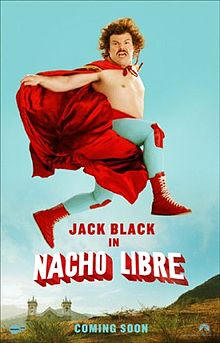
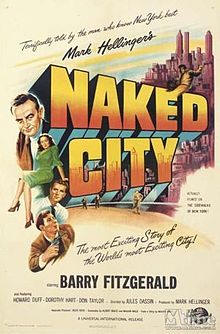
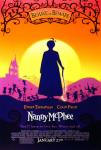


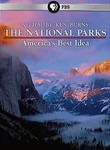
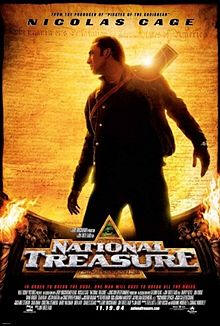
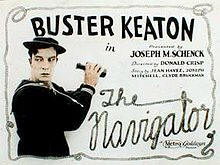

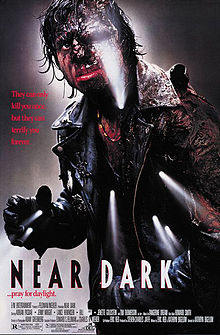

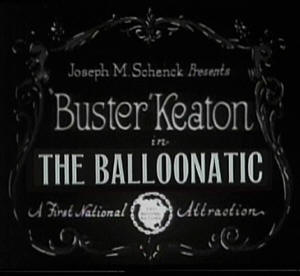


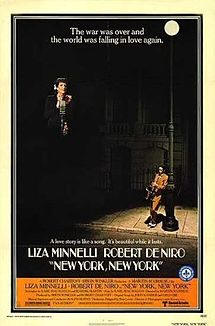
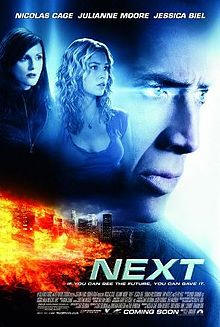
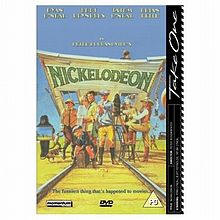
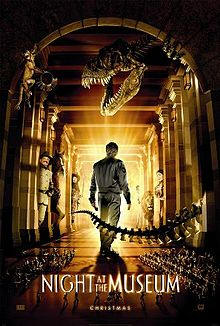
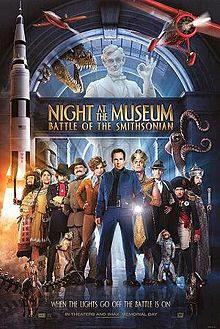
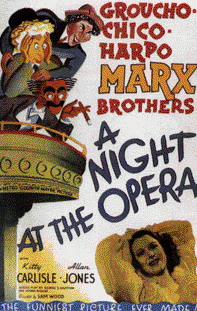
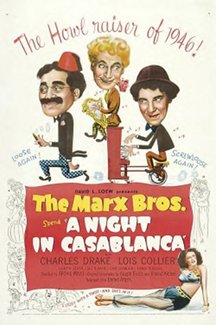
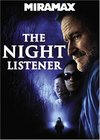
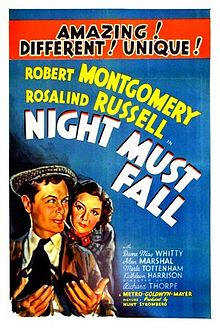
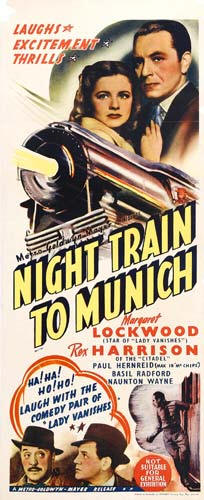

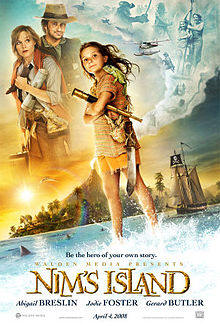
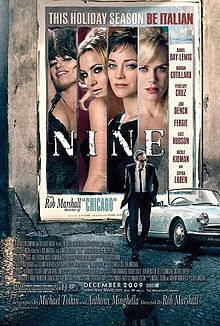

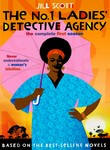
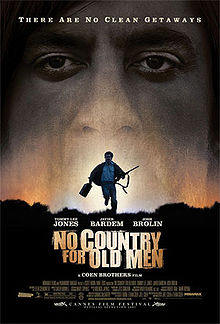

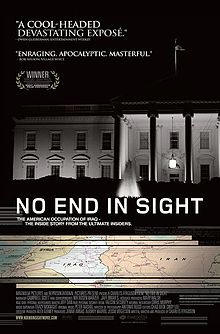
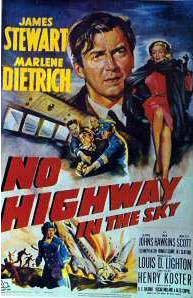
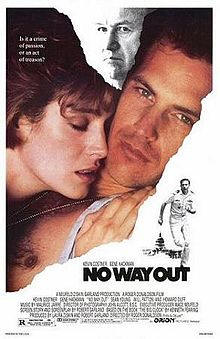


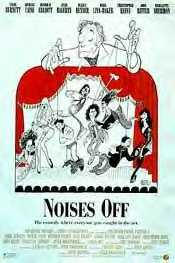
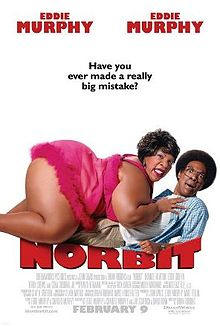
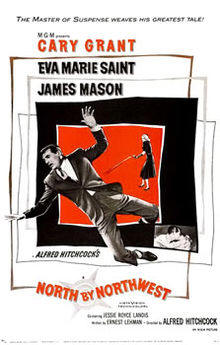

.jpg/220px-North_Face_(film).jpg)



